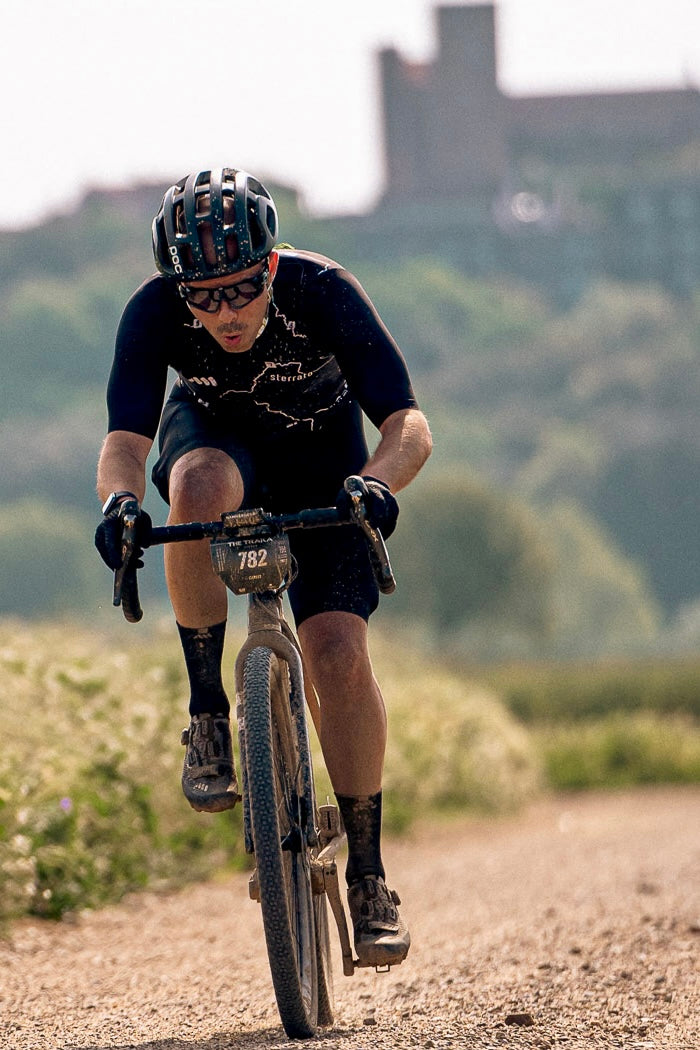What Really Makes a Grip “Grippy”?. Mechanical Vs. Chemical Grip
Before cofounding All Mountain Style®, I spent years as a mechanical engineer working on dynamic simulations, structural analysis (FEA), and developing motorcycles from the ground up. I’ve always been obsessed with the connection between rider and machine: whether in MotoGP, rally, enduro, or gravel trails. That obsession continues today at AMS, where we apply engineering thinking to something riders often take for granted: grip.
This post is my breakdown of the science behind what makes a grip truly work.
Understanding Mechanical vs. Chemical Grip in MTB Grips and Bar Tape
When riders talk about grips, whether on a mountain bike or a dropbar setup, they usually say things like “this one feels tacky,” or “that one’s super grippy,” or “this tape sticks even when wet.”
But what does “grippy” actually mean?

At AMS, we design every grip and bar tape with the same level of detail and performance focus as tyre engineers do with rubber compounds. That’s because grip isn’t just feel: it’s physics and chemistry. And there are two distinct types of grip at play:
Mechanical Grip vs. Chemical Grip
Let’s start with definitions:
- Mechanical grip is the physical interlocking between the grip or tape surface and your hand, glove, or bar. Think of it like Velcro: shapes locking together, micro-textures resisting slippage.
- Chemical grip is the molecular adhesion between materials. How “sticky” the compound feels. It’s what happens when a rubber surface momentarily bonds with your skin or gloves.
Check below different types of "adhesion" in a microscopic view:

These two forces often work together, but they depend on material, design, rider use, and environment.
Mechanical Grip: Texture, Pattern, and Pressure
Mechanical grip comes from how the surface of the grip or bar tape physically interacts with your hand. It’s influenced by:
- Tread or pattern design : micro-ribs, diamonds, flanges, or grooves that increase friction
- Deformation: how much the rubber compresses and adapts to your hand under load
- Surface roughness: microscopic details that increase contact points
It’s exactly what tyres do when they dig into soil or rock. But with grips, we design patterns not just for terrain, but for how your hand grips, pushes, and pulls on the bar.
Example from AMS:
Our RISE grip has ribbed pads and a micro-diamond texture in strategic zones. These aren’t aesthetic choices. They’re mechanical features designed to provide grip when your thumb pushes forward and when your palm lifts during descents.

Chemical Grip: Tackiness and Adhesion
Chemical grip is about surface interaction at the molecular level. It’s what makes a grip feel “sticky” or “tacky”: even without any visible texture.
Chemical grip depends on:
- Rubber compound hardness (Shore A scale): softer = more adhesive contact
- Surface chemistry: how rubber interacts with skin, sweat, and gloves
- Finish: matte, textured surfaces enhance grip in humid or wet conditions
Rubber hardness is measured with a durometer as pictured below:

Example from AMS:
Our Extralight grip uses a superlight, soft-density compound specifically tuned for chemical grip with bare hands. It delivers low-profile feel that connects directly with your skin, even without gloves: giving you intuitive control on long XC and trail rides.
When Sweat, Rain, and Gloves Enter the Equation
Grip performance changes dramatically when moisture is involved:
- Sweat can reduce mechanical grip by filling in texture gaps: just like mud clogs tyre treads.
- But it can improve chemical grip, especially with tacky compounds.
- Gloves change everything: they can reduce tactile feedback, so the grip’s surface and feel need to compensate
This is why we design grips differently based on glove usage:
- EXTRALIGHT = tuned for bare hands
- CERO = optimized for gloved control under pressure
- BERM = the balanced all-rounder
Bar Tape: Same Science, New Shape
With bar tape, the same grip principles apply, but the interaction is different, since bar tape doesn’t fully mold around the handlebar like an MTB grip does. Instead, grip depends more on how tightly it’s wrapped, how the tape deforms under pressure, and how its surface interacts with your hand.
- Mechanical grip comes from the surface pattern and how tightly the tape is wrapped
- Chemical grip comes from the compound and finish. Especially in sweaty or wet conditions
AMS examples:
- Sterrato Bar Tape uses a soft-touch foam with integrated gel for excellent conformability, delivering high mechanical grip by molding to your hand under pressure. The embedded contour line pattern adds additional friction, especially when riding gloveless or in wet conditions.
- Honeycomb Bar Tape features a high-density compound and a textured hex pattern, optimizing both mechanical grip (via surface structure) and chemical grip (via the denser compound). It also echoes the visual identity of our signature frame guards, tying performance and aesthetics together.

The Balance: Comfort vs. Control
Some riders prefer a soft, sticky grip (high chemical grip). Others want a firm, textured grip they can move around on (high mechanical grip).
Too much stick? You can’t micro-adjust.
Too little pattern? You might slip on a sweaty descent.
The best grip products balance both forces: tailored to terrain, riding style, and rider feel. That’s what we call Ride-Specific Design and AMS Ride Feel.
AMS Grip Intelligence: Science-Backed Feel
At AMS, we’ve built a product development framework called Grip Intelligence: rooted in materials science, mechanical engineering, and rider data.
We test durometer, pattern, shape, and compound interaction across all our grips and tapes, always looking to refine the balance between mechanical interlock and molecular stick.
Because great rides start with great control. And that starts with understanding the science of your grip.













